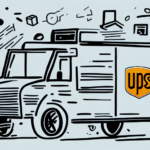Understanding the Cost of USPS Insurance for Your Packages
Shipping packages with confidence requires understanding the costs and benefits of insuring your shipments. USPS insurance is a valuable service that protects your packages against loss or damage during transit. This guide delves into the costs associated with USPS insurance, compares it with other carriers, and provides tips to maximize your shipping budget.
What is USPS Insurance and Why Do You Need It?
USPS insurance is a service offered by the United States Postal Service that provides financial protection for your packages in case they are lost, stolen, or damaged during transit. While USPS does offer limited liability coverage by default, this coverage often only amounts to $50 or $100, depending on the service used. Insuring your packages ensures that their full value is protected beyond the default coverage.
Insuring your packages is especially important for valuable or fragile items. Without insurance, you risk bearing the full cost of replacing lost or damaged goods. According to the USPS Business Insurance, the service is available for both domestic and international shipments, with costs varying based on the declared value of the item.
How to Calculate the Cost of USPS Insurance for Your Packages
The cost of USPS insurance is primarily determined by three factors:
- Declared Value: This is the estimated value of the contents of your package. Accurately declaring this value ensures proper coverage.
- Destination: International shipments typically incur higher insurance costs compared to domestic ones.
- Service Type: Different USPS services offer varying levels of coverage and associated costs.
For instance, insuring a package valued at $500 with Priority Mail might cost approximately $2.50, while the same package insured with Priority Mail Express could cost around $3.50. It's important to consult the USPS Insurance Services page for the most accurate and up-to-date pricing.
Types of USPS Insurance Options Available
USPS provides several insurance options tailored to different shipping needs:
- Priority Mail Express Insurance: Offers coverage up to $100 or the declared value of the package, whichever is higher.
- Priority Mail Insurance: Similar to Express Insurance, this covers up to $100 or the declared value.
- First-Class Package Service Insurance: Provides coverage up to $100 or the declared value.
- International Insurance: Covers up to $2,499 or the declared value, depending on the destination country.
Each insurance type has its own set of exclusions and limitations. For example, perishable goods, live animals, and hazardous materials are not covered. It's crucial to review the USPS Insurance Services guidelines to ensure your items are eligible.
Comparing USPS Insurance Rates to Other Shipping Carriers
When evaluating shipping options, it's beneficial to compare USPS insurance rates with those of other carriers like UPS and FedEx. Generally, USPS offers competitive rates, especially for smaller packages. For example:
- USPS: $1.65 for $100 coverage via Priority Mail.
- UPS: $2.70 for $100 coverage.
- FedEx: Approximately $3.00 for similar coverage.
Moreover, USPS provides complimentary insurance for Priority Mail and Priority Mail Express, which can result in significant savings for frequent shippers. However, other carriers may offer additional benefits such as real-time tracking and guaranteed delivery times, which might justify their higher insurance costs depending on your needs.
Refer to the USPS Shipping Comparison for a detailed analysis of different carriers.
USPS Insurance Coverage Limitations and Exclusions
While USPS insurance is a valuable service, it's important to be aware of its limitations:
- Excluded Items: Cash, money orders, jewels over $500, live animals, and hazardous materials are not covered.
- Coverage Limits: Even with insurance, certain high-value items may not receive full coverage.
- Packaging Requirements: Damage resulting from improper packaging may not be covered.
For detailed information on exclusions, visit the USPS Insurance Services page.
Tips for Saving Money on USPS Insurance for Your Packages
Maximizing your shipping budget while ensuring adequate protection is achievable with the following strategies:
- Accurate Valuation: Declare the actual value of your package to avoid overpaying for unnecessary coverage.
- Use Complimentary Insurance: Utilize the free insurance included with Priority Mail and Priority Mail Express services.
- Bundle Shipments: Combining multiple items into a single package can reduce overall insurance costs.
- Explore Alternative Carriers: For certain shipments, other carriers might offer better rates or additional benefits.
- Self-Insurance: For businesses with predictable shipping patterns, setting aside funds to cover potential losses can be cost-effective.
Implementing these tips can lead to substantial savings, especially for businesses that ship regularly.
How to File a Claim for Lost or Damaged Packages with USPS Insurance
If your package is lost or damaged, filing a claim promptly is essential to receive compensation. Here's how to navigate the claims process:
- Submit a Claim: Claims can be filed online through the USPS Claims website or in person at your local post office.
- Provide Documentation: You'll need to furnish the original shipping receipt, proof of insurance, and evidence of the package's value.
- Describe the Issue: Clearly detail whether the package was lost, damaged, or stolen.
- Await Resolution: The USPS typically processes claims within 30 days, but more complex cases may take longer.
Ensure that all information is accurate and complete to expedite the claims process. For more details, visit the USPS Claims Assistance page.
Understanding the Claims Process and Timeline for USPS Insurance
The USPS claims process involves several steps and a typical timeline:
- Initial Submission: Once a claim is filed, USPS reviews the submitted documentation for completeness.
- Assessment: USPS evaluates the claim based on the provided evidence and their internal guidelines.
- Decision: If approved, compensation is issued based on the declared value and coverage limits.
The entire process can take anywhere from one to three months. To ensure a smooth claims experience:
- Submit all required documents promptly.
- Respond to any follow-up requests from USPS.
- Keep copies of all communications and submissions.
For detailed information on the timeline, refer to the USPS Claims Timeline.
Frequently Asked Questions About USPS Insurance for Packages
Is USPS Insurance Necessary for All Packages?
No, it's not mandatory. However, it's recommended for high-value or fragile items to ensure financial protection against loss or damage.
How Do I Purchase USPS Insurance?
Insurance can be purchased at the post office when shipping your package or online when creating a shipping label via the USPS Business Mailing Solutions.
Can I Add Insurance After I've Already Shipped My Package?
No, insurance must be added at the time of shipping. Once the package is dispatched, additional insurance cannot be retroactively applied.
What Items Are Not Eligible for USPS Insurance?
Items such as cash, money orders, jewels over $500, live animals, and hazardous materials are excluded from USPS insurance coverage.
How Long Does It Take to Receive Compensation from a Claim?
Typically, claims are processed within 30 days. However, more complex cases may take up to three months.
By understanding the intricacies of USPS insurance, you can make informed decisions that balance cost and protection. Always assess the value of your shipments and choose the insurance options that best meet your shipping needs.






















